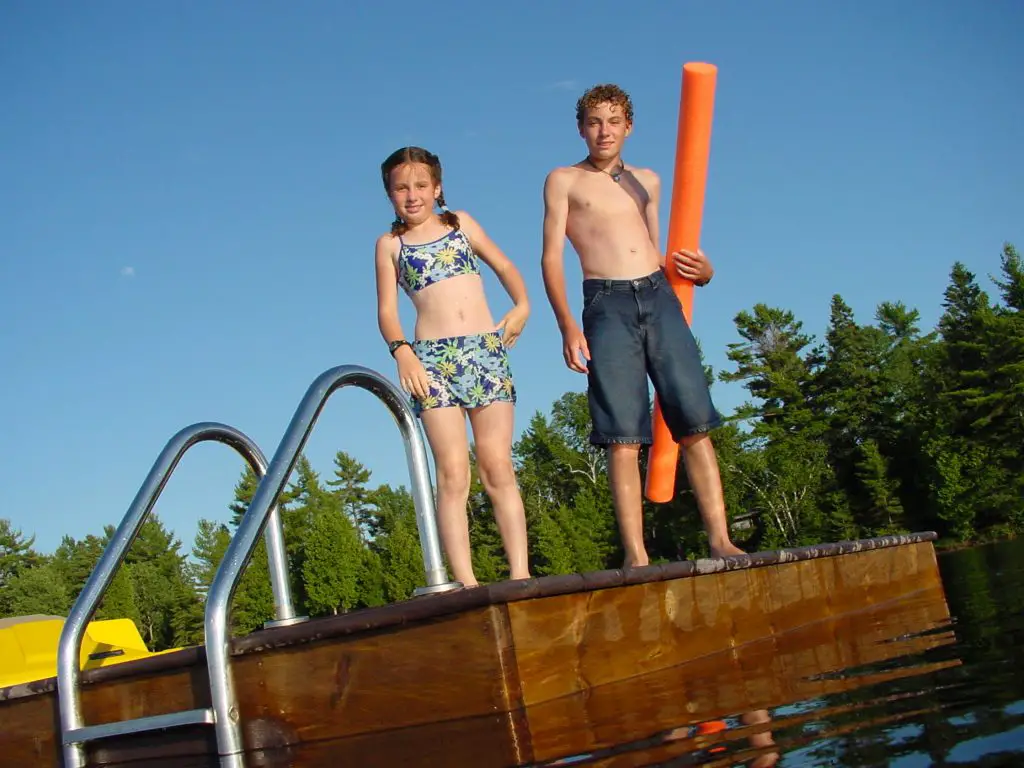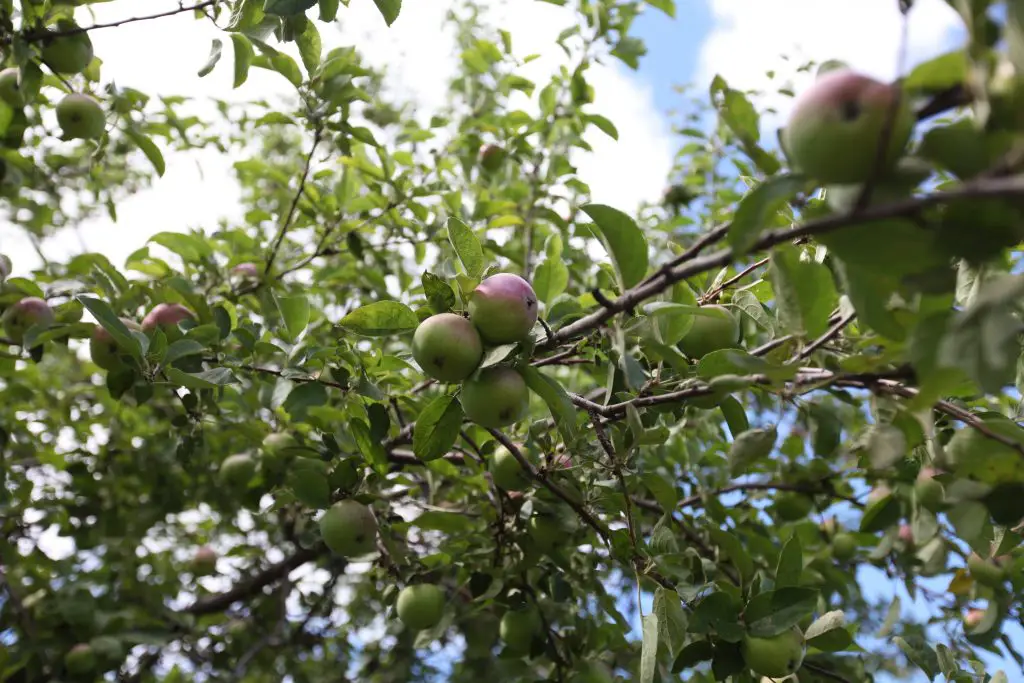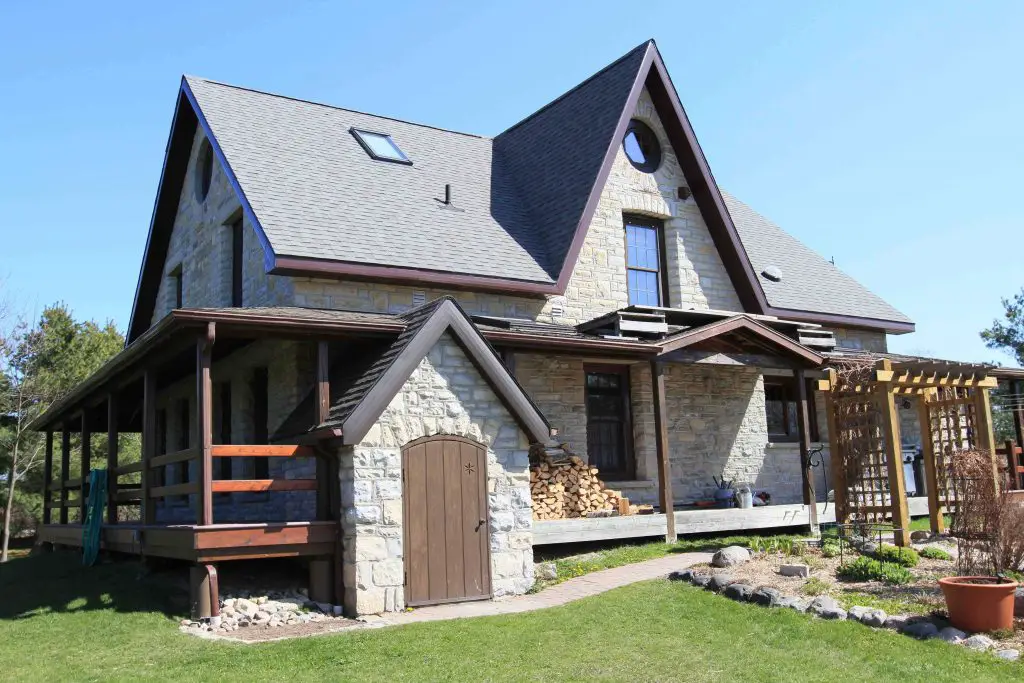UPDATED 18Sep2020: When people find out that I grew up in the suburbs of a large, North American city, then moved to a very rural homestead property on Manitoulin Island, Canada in my early 20s, they usually ask me questions. Why the move away from the city? Why the move to the particular rural area I chose? Folks usually find my answers interesting, and perhaps you will, too.
Finding a Rural Property

It wasn’t easy for my wife and I to find a homesteading property and I don’t think our challenges were unusual. First you need to find a piece of land that’s attractive and productive, ideally with a combination of farmland and forest. What you see above is a cow’s eye view from one of our pastures, with our forest in the background.
You’ll also want land located in a region that you like. The property has to fit your budget, and it needs to either have the kind of buildings you can live with or you’ll have to build your own. And if all this isn’t enough, the land also has to be for sale, too. That’s a bunch of tall orders that all need to come together, but after four years of searching, we did find an area that clicked with us right away. But to be honest, our happy discovery came only after a long string of disappointments. Expect disappointments.
The Problems We Experienced

When I looked at homestead properties in mainstream farming areas, I found wall-to-wall corn fields with brown, silted rivers, phosphorus-polluted lakes and high land prices. By contrast, when I looked at cottage country in rocky lakeland areas, I found clean water and lots of trees, but not enough soil to even grow a tomato plant. That would never do. We wanted property with the potential to produce serious amounts of food, but with clean lakes, lots of forest and no influence from a nearby city. We weren’t finding it. Did this even exist?
After years of looking, I was ready to lower my standards. Nothing seemed to be even close to what I had in mind, but then things changed. As it turned out, there is at least one place on earth where farmland and forests and clean lakes do exist side by side and we found it. The photo above is of a couple of my kids a few years ago on a raft we keep anchored in a lake few minutes walk from our homestead farm with it’s cattle pasture and gardens.
Accidental Success

My final land scouting trip began as a visit to an area with rich soil, but it turned out to have a climate so cold you couldn’t even grow an apple tree. The 7 hours it took to drive there turned out to be a waste of time, and I was really getting discouraged at this stage. Nothing I’d found was even remotely close to what I wanted to build my life around. I was 22 years old by then, living with my parents, and on my way back home I decided to take a detour and travel to Manitoulin Island, Ontario, Canada. I had no expectations, I just wanted to see the place. I’d heard of it before and it sounded interesting. Within five minutes of crossing the swing bridge onto the island, I knew that somewhere here was the homestead place for me. I was right. The photo above is one of our fields in early winter. I’ve come to know each of the fence row trees very well over the last 30 years.
The reasons for my attraction to Manitoulin back then are the same as they are today. This island is the most geographically diverse landscape I’ve ever seen. It’s the largest freshwater island in the world, and includes a refreshing balance of family farms, mature forests and over 100 clean inland lakes with lots of fish right on the island itself. The south shore looks like the ocean and the north shore fronts on one of the most spectacular sailing areas in the world. Manitoulin is teeming with deer (you can easily see 40 or 50 during a one hour evening drive in the summer), rabbits are everywhere, as are coyotes. There are also bobcat, fisher, bald eagles, blue birds and even trustworthy sightings of cougar. Also – and this has always been vitally important for me – Manitoulin is three hours drive from the nearest city, so there isn’t even a whiff of anything urban about it. It’s a franchise-free zone, with none of the lifestyle nonsense that kicks in when rural places are really just bedroom communities for people with city careers and lots of money.

My discovery of Manitoulin happened on a warm day in August of 1985, and many little things surprised me about the island. Apple trees were one of them. They grew on farmsteads around the island, but also they grew wild along the sides of the road. And most of the apples were more or less worm-free without care – something I’d never seen before or since. Any time from early August to when the snow flies in late November you can find very good apples growing wild along the sides of the road. That’s a picture above of typical wild apples you’ll find on Manitoulin.

Asking price for a 100 acre Manitoulin farm without buildings back in 1985 was $30,000. After a few days searching I found a listing for a 91.5 acre parcel of good soil and forest for $18,000. I made an offer of $16,500, it was accepted, and the rest is history. It took all my savings to buy the land and a little bit extra from my parents, but homesteading had now moved from theory to reality. It was time to start thinking about building a house, but I had to do it cheap. In the end, Mary and I built my 2800 square foot stone house for about $35 per square foot using a lot of my own labour and local materials. That’s the place above, but that’s another part of the story for another time . . .
Bottom line: If you’re looking to buy rural land for modern homesteading or recreation, take your time. The process is more challenging than it appears, and the outcome more important than you might realize.